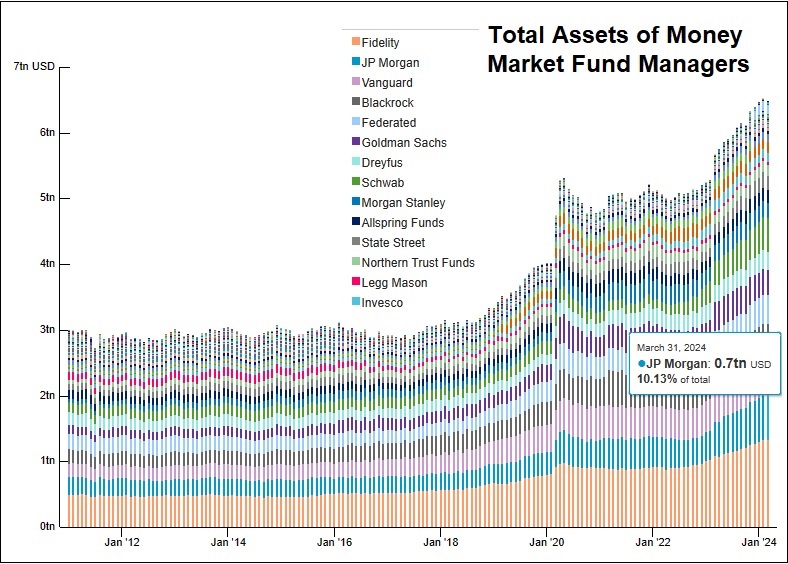Boosting The Stock Market: The Fed’s Risky QE4 Stock Ramp
from Silver Doctors:

Since surging in a straight line since mid-October and shooting vertically, the US stock markets are in real trouble. Here’s why…
by Adam Hamilton of Zeal LLC
The US stock markets dramatically surged mostly in a straight line since mid-October. This extraordinary rally started when the Federal Reserve announced it would resume expanding its balance sheet for the first time in years. The deluge of new liquidity from that quantitative-easing bond buying has again acted like rocket fuel for stock markets. After shooting vertically they are in real trouble when the Fed pulls back.
In early October the flagship US S&P 500 stock index (SPX) slumped to 2888. That was a mild 4.6% pullback from late July’s latest record high. The SPX was still having a great year though, up 15.2% year-to-date at that point thanks to extreme Fed easing. After the SPX had plunged 19.8% mostly in Q4’18 in a severe near-bear correction, the Fed pulled out all the stops to bring stocks back from the brink of bear-dom.
Panicking after helping spawn that deep selloff, in 2019 the Fed prematurely killed quantitative-tightening bond selling years early, shifted its future rate outlook from hiking to cutting, and slashed its federal-funds rate 3 times in 3.0 months! In late December I wrote a popular essay detailing all the Fed’s actions last year, showing how each directly boosted the US stock markets. But the coup de grace came in mid-October.
The Federal Reserve publishes meticulous records, including minutes from every Federal Open Market Committee meeting and transcripts from every speech by high Fed officials including the chair’s post-FOMC-meeting press conferences. So most of the quotations in this essay are copied verbatim right out of those official Fed documents. They shed light on the Fed’s motivation for rekindling QE bond monetizations.
In mid-September the SPX was hovering just over 3000 as the FOMC held one of its regular meetings which happen about every 7 weeks. The day before, the Fed stunned announcing emergency funding operations for the overnight repurchase-agreements market! Described as the plumbing behind the US financial markets, repo rates exploded overnight. They soared far above the federal-funds-rate target range.
The Fed chair Jerome Powell was asked about this at his post-FOMC-meeting press conference on September 18th. On money-market problems, he replied “we have the tools to address those pressures. We will not hesitate to use them.” One of those tools is quantitative easing, the Fed conjuring up new money out of thin air and using it to buy bonds. Fed officials euphemistically call this balance-sheet expansion.
On that same question Powell concluded, “we’re going to be assessing, you know, the question of when it will be appropriate to resume the organic growth of our balance sheet. And I’m sure we’ll be revisiting that question during this intermeeting period and certainly at our next meeting.” That was a big hint the first quantitative-easing campaign since QE3 ended in October 2014 was moving towards the launchpad.
As the Fed’s emergency repo ops continued daily, the SPX slid 4.0% over the next couple weeks. There was increasing talk that these temporary repo ops would have to morph into permanent open-market operations, another name for QE. On October 8th Powell gave a speech at the National Association for Business Economics’ annual meeting in Denver. He used that to pre-announce QE4’s imminent birth.
Referencing the chaos in repo-land, Powell said, “While a range of factors may have contributed to these developments, it is clear that without a sufficient quantity of reserves in the banking system, even routine increases in funding pressures can lead to outsized movements in money market interest rates. This volatility can impede the effective implementation of monetary policy, and we are addressing it.”
“Indeed, my colleagues and I will soon announce measures to add to the supply of reserves over time.” He even preemptively tried to argue that the Fed’s coming balance-sheet expansion wasn’t QE4! “I want to emphasize that growth of our balance sheet for reserve management purposes should in no way be confused with the large-scale asset purchase programs that we deployed after the financial crisis.”
After closing near pullback lows that day, the SPX surged 1.6% over the next couple days on hopes for a US-China trade deal. Trump declared a “substantial Phase One deal” had been made on October 11th. That drowned out a far-more-important announcement by the Fed, which was issued between regular FOMC meetings to downplay it. This “Statement Regarding Monetary Policy Implementation” birthed QE4.
While that was light on details, it did declare “the Federal Reserve will purchase Treasury bills at least into the second quarter of next year”. The New York Fed in charge of open-market operations released its own “Statement Regarding Treasury Bill Purchases and Repurchase Operations” to clarify what was coming. Incredibly this new QE4 bond buying would be in addition to the ongoing repo ops, not replacing them!
The NY Fed proclaimed “the Desk plans to purchase Treasury bills at an initial pace of approximately $60 billion per month, starting with the period from mid-October to mid-November.” And “the Federal Open Market Committee (FOMC) directed the Desk, effective October 15, 2019, to purchase Treasury bills at least into the second quarter of next year”. QE4 started at $60b per month of T-bill monetizations into Q2’20!
Loading...



